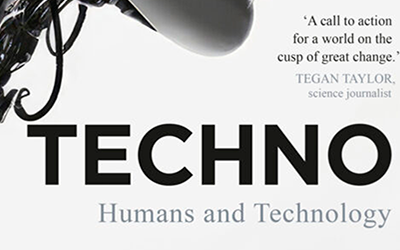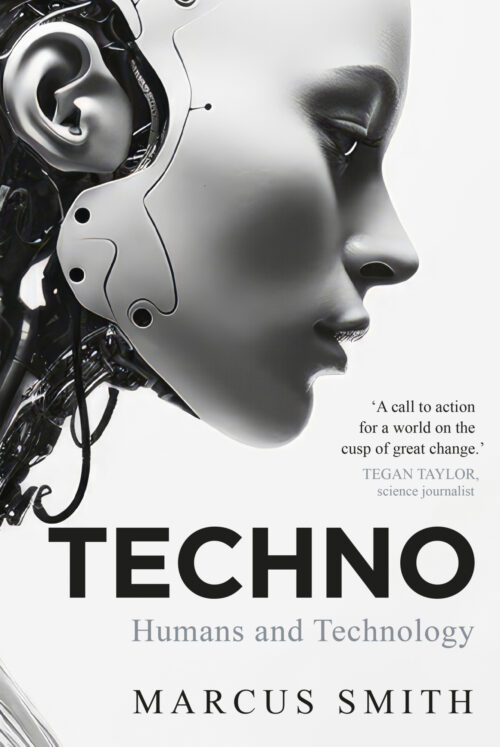- Free Article: No
- Contents Category: Technology
- Review Article: Yes
- Article Title: Taking a hammer
- Article Subtitle: Thinking within the guardrails
- Online Only: No
- Custom Highlight Text:
For those of us who would like to see a revival of the ‘techno-critical’ tradition in public debate (the tradition of Marshall McLuhan, Jacques Ellul, Neil Postman, and Langdon Winner, inter many alia), it is a cause of some irritation that the hegemonic view of technology remains the instrumental one. Here, technology is deemed to be neutral, in a way that precludes any serious analysis of its constitutive role in human affairs. Technologies, it is said, are merely tools to serve the needs of their users; they have no political content per se. I can use a hammer to drive in a nail or bludgeon my next-door neighbour to death. It is my actions that matter, not the hammer itself.
- Featured Image (400px * 250px):

- Alt Tag (Featured Image): Richard King reviews 'Techno' by Marcus Smith
- Book 1 Title: Techno
- Book 1 Biblio: University of Queensland Press, $34.99 pb, 238 pp
- Book 1 Cover Small (400 x 600):

- Book 1 Cover (800 x 1200):

Marcus Smith’s Techno is a book about technology that sits solidly within this instrumental approach. For Smith – an associate professor in technology, law, and regulation at Charles Sturt University – the current revolution in technology, and in digital technology in particular, necessitates not a counter-revolution but carefully drafted legislation that will spread the benefits of digital tools while mitigating their risks. Certainly, Smith has an impressive grasp of the issues involved in this endeavour, and he communicates those issues to a non-specialist readership in straightforward and uncluttered prose. But for all his obvious expertise, his book also demonstrates the limitations of the instrumentalist approach to technology and the regulatory solutionism it engenders.
Though Techno is divided into three broad sections – ‘Technology and Government’, ‘Technology and the Individual’, and ‘Technology and Society’ – most of its material is concerned with the relationship between the state and the private individual, and with how the modern technology company complicates that relationship. In a key chapter, Smith relates at length the story of how the Australian government came into conflict with Mark Zuckerberg’s Meta over plans for a media bargaining code, which would oblige social media platforms like Facebook to pay for the news that appeared in their feeds. The example is an important one, for while in one sense it bears on conventional questions of political economy – on the relationship between ‘positive’ and ‘negative’ liberty, and between market freedoms and social democracy – it is clear that digital technologies pose a challenge of a different order to this ‘agonistic’ vision of liberalism, evading as they do the jurisdictional controls that apply to other industries.
I should add that this is much more academic language than Smith employs in his analysis; but to the extent that this book has intellectual weight, it relates to the fundamental questions posed to the liberal-capitalist state by the information economy, and the affordances that emerge from it. From the discussion of how law-enforcement agencies are empowered by the new technologies (and of the benefits and potential dangers that flow from that empowerment) to the discussion of cryptocurrencies and the opportunities they open up for both honest investors and criminals, all the most compelling sections in Techno are relevant to this highly significant question.
The problem, however, is that the question is not new and does not even begin to grapple with the ways in which new and emerging technologies – technologies that allow us to seed the world with new forms of intelligence, and, indeed, to intervene in nature at the level of the atom, the cell, and the molecule, up to and including human molecules – are affecting human beings now and are likely to affect them in the future. Indeed, there is a certain fatalism baked into the regulatory approach, a fatalism that, while seeming to search for solutions to the problems caused by those technologies, remains wedded to the system from which they emerged, and blind to the ways they reproduce its values of individualism and utilitarian efficiency. Smith’s subtitle is ‘Humans and Technology’; but his human, as noted, is the private citizen, which is first and foremost a legal entity. Similarly, the word ‘rights’ is sprinkled throughout the book like currents in a Chelsea bun: governments have the right to regulate Big Tech; Big Tech has the right to healthy competition; and individuals have the right to take advantage of Big Tech. However, communities aren’t composed of rights: they are composed of flesh-and-blood human beings – technological animals whose technologies, I would argue, increasingly work against the grain of their social, creative, and embodied lives.
Smith might object, and object with some justice, that I am being insufficiently pragmatic, and I should say that his list of three ‘imperatives’ to guide us in the legal space – involving ‘key players’ in the drafting of legislation, using technologies to ensure compliance, and the establishment of a global agency to coordinate technology regulation – are both sensible and lucidly set out. But pragmatism has an annoying tendency to concede the important points in advance, and my sense is that Techno falls into this trap. As the Luddites were only too aware, sometimes you need to take a hammer to the system.


Comments powered by CComment